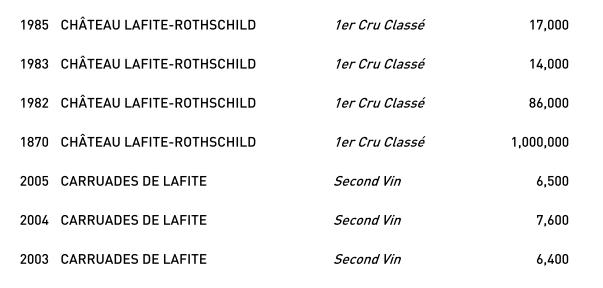
By Jim Boyce | ‘Best’ is a tricky word when it comes to the food and drink game. Take restaurants: one person’s exquisite Michelin-star venue that uses premium products from around the planet is another’s hip hole-in-the-wall joint that offers one-of-a-kind dishes made with locally sourced fare.
So it goes with wine lists and determining which one is ‘best’. I recently waded through over 1000 pages of them as part of the China Wine List of the Year Awards.
There are many factors to consider, from menu design to portfolio breath to how the wines fit with the food. Is the list accessible to consumers with little wine knowledge? Is it only decipherable by experts? Does it manage to appeal to both? How about wine-by-the-glass options? Or formats beyond the standard bottle size? And Chinese wines: are there any good local options?
The restaurants showed a wide range of listing strategies, from massive highly collated menus to smaller quirkier ones.
At one end are lists with hundreds of pages, thousands of wines, and a seemingly endless supply of rare vintages, trophy bottles and famous brands, notably ‘Old World’ ones from France, Italy, Germany and Spain, with exceptions for ‘New World’ sources like the United States and Australia. Seeking a nineteenth-century Port, a magnum of Margaux, or to pick and choose from over a hundred Beernauslese options? Step right up. You’ll most likely do that stepping in Macau, with The Kitchen in Grand Lisboa the most striking example this year (you can grab a bottle of 1870 Lafite there for an even million Patacas.)
Such lists overwhelm most people and are akin to visiting not only a museum but also the massive storerooms from which it sources its collection. Where to start? This is not to knock their value: there are people who appreciate such wines, including those can’t afford them, who study them much as an aficionado of luxury cars would enjoy a Ferrari museum despite being on a Passat budget. But they are too much for most people, particularly in terms of price.
On the other end are those smaller and quirkier menus. While these tend to have healthy splashes of Old World standards and trophy wines, they cover a broader surface: think a French restaurant with lots of options from lesser-known areas of that country or a steakhouse with wines from dozens of nations to match its food. The lists this year included wines from producers not often found on China menus, including Syria and Cyprus and Brazil and Bulgaria. Many had Chinese wines, though typically from the same half-dozen producers. And some were thoughtfully organized, notably that of Hakkasan Shanghai (see image below), which arranges by styles and themes, has terse but useful category descriptions, draws on brands from over a dozen countries, includes plenty of lesser-known grapes, and has intriguing cocktail and spirit options to boot.
Just as some criticize the monolithic nature of those 500-page menus, some find fault with these smaller ones. As an example, menus with wines from a dozen or two countries–and often only one or two options from each–can seen as trying to be everything to everybody. And some of those wines, while being of interest as novelties, aren’t at the quality level one expects from top restaurants.
Even so, I gravitate toward these latter menus, as I’m not wedded to any one region or country and enjoy trying novel wines. I won’t say these menu are “best” because I know people for whom, say, Burgundy is the only thing that matters, want to explore them no matter price and thus appreciate having a thousand-plus options. Ultimately, that what makes it fun to go through these lists: much like wines, each one has its own personality and will appeal to different people for different reasons. Call it a bunch of bests.
You can get more info on the China Wine List of the Year Awards here.

Grape Wall has no sponsors of advertisers: if you find the content and projects like World Marselan Day worthwhile, please help cover the costs via PayPal, WeChat or Alipay.
Sign up for the free Grape Wall newsletter here. Follow Grape Wall on LinkedIn, Instagram, Facebook and Twitter. And contact Grape Wall via grapewallofchina (at) gmail.com.

Leave a Reply
You must be logged in to post a comment.